Finding Cost-Effective Suppliers for 5-Ton Overhead Cranes
Find affordable suppliers for 5-ton overhead cranes through efficient research methods and negotiation tactics for cost-effectiveness.In different sectors off heavy machinery, finding the right supplier for 5-ton overhead cranes can make all the difference. Whether you're setting up a manufacturing plant or expanding your warehouse, the choice of supplier can impact your operations and bottom line significantly. Welcome to our guide on sourcing cost-effective suppliers for 5-ton overhead cranes, where we'll walk you through the essential steps to ensure you find the best fit for your needs.
Let's start by highlighting why sourcing the right supplier is crucial. Picture this: you've invested time and resources into planning your project, but when it comes to acquiring the necessary equipment, you hit a roadblock. The supplier you chose either can't meet your specifications or demands an exorbitant price, putting your project at risk. This scenario underscores the importance of sourcing - finding a reliable supplier who can deliver quality cranes at a reasonable cost is essential for the success of your venture.
Estimate Your Requirements
Before you start reaching out to suppliers, it's crucial to have a clear understanding of your requirements. This involves more than just knowing you need a 5-ton overhead crane; it's about pinpointing the exact specifications and features that will meet your operational needs while staying within budget constraints.
Determining Specific Needs and Technical Specifications
Begin by defining the specific requirements for your 5-ton overhead crane. Consider factors such as:
- Load capacity: How much weight will the crane need to lift on a regular basis?
- Span and height: What are the dimensions of the area where the crane will operate, including ceiling height and the distance it needs to cover?
- Hoist speed and control options: Do you need precise control over lifting and lowering speeds? Are there any safety features required?
- Duty cycle: How frequently will the crane be in use? Will it be used for continuous operations or intermittent lifting?
- Environment: Will the crane operate in harsh conditions such as extreme temperatures or corrosive environments?
By identifying these specifics, you can narrow down your search to suppliers who can meet your technical requirements.
Identifying Any Unique or Specialized Requirements
Next, consider any unique or specialized requirements that may set your project apart. This could include:
- Customization: Do you need a crane with specific modifications or features tailored to your application?
- Compliance: Are there industry regulations or safety standards that the crane must adhere to?
- Integration: Will the crane need to work alongside existing equipment or systems?
Being aware of these unique needs upfront will ensure that you find a supplier who can accommodate them.
Assessing Budget Constraints and Cost Considerations
Budget considerations play a significant role in the sourcing process. Take the time to evaluate your budget constraints and determine how much you're willing to invest in acquiring the crane. Consider not only the upfront cost but also long-term expenses such as maintenance and operational costs.
Be realistic about what you can afford while also keeping in mind the value that a quality crane can bring to your operations. Remember, opting for the cheapest option may not always be the most cost-effective in the long run if it results in frequent breakdowns or inefficiencies.
By estimating your requirements thoroughly, you lay the foundation for a successful sourcing process. Armed with this information, you can approach suppliers with confidence, knowing exactly what you need and what you can afford.
Conducting Supplier Research
Now that you have a clear picture of your requirements, it's time to start the search for potential suppliers. Conducting thorough research is essential to identify reputable suppliers who can meet your needs reliably and efficiently.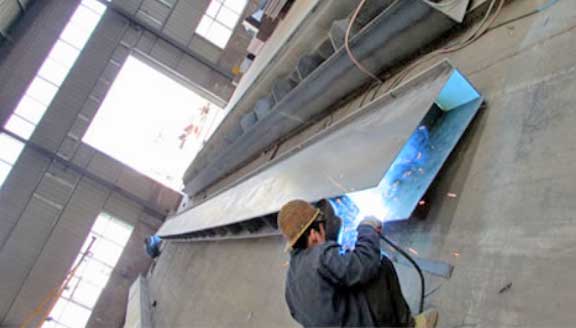 Crane production in our wrokshop in Changyuan, Henan, China
Crane production in our wrokshop in Changyuan, Henan, China
Utilizing Online Databases, Directories, and Industry Networks
Start by leveraging online resources to compile a list of potential suppliers. Online databases, industry-specific directories, and professional networks can be valuable sources of information. Websites like Thomasnet, Alibaba, and industry forums can help you identify suppliers that specialize in 5-ton overhead cranes.
Utilize search filters to narrow down your options based on criteria such as location, product offerings, and certifications. Don't hesitate to reach out to industry peers or associations for recommendations or referrals.
Investigating Supplier Reputation, Experience, and Track Record
Once you have a list of potential suppliers, delve deeper into their background and reputation. Look for reviews, testimonials, and case studies from past clients to gauge their reliability and performance.
Consider the supplier's experience in the industry and track record of delivering quality products and services. A supplier with a long-standing reputation for excellence is more likely to meet your expectations and provide reliable support throughout the procurement process.
Assessing Supplier Capabilities and Capacity
Evaluate each supplier's capabilities and capacity to ensure they can meet your specific requirements. Consider factors such as:
- Production capacity: Can the supplier handle your order volume within the required timeframe?
- Technical expertise: Does the supplier have the necessary skills and knowledge to customize the crane to your specifications?
- Quality control measures: What processes does the supplier have in place to ensure product quality and reliability?
Request information or documentation that demonstrates the supplier's capabilities, such as manufacturing facilities, equipment, and quality certifications.
Considering Factors Such as Location, Certifications, and Industry Affiliations
Location can play a significant role in supplier selection, particularly in terms of shipping costs and lead times. Consider proximity to your facility or project site to minimize logistical challenges and transportation expenses.
Additionally, certifications and industry affiliations can provide valuable insights into a supplier's commitment to quality and compliance. Look for certifications such as ISO 9001 for quality management systems or industry-specific certifications relevant to overhead crane manufacturing.
By conducting comprehensive supplier research, you can identify reliable partners who can meet your requirements effectively and contribute to the success of your project.
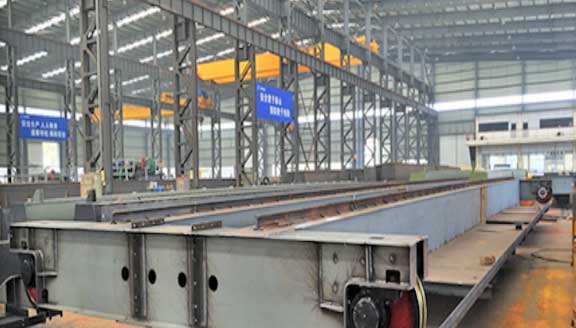
Soliciting Competitive Bids
Once you've identified potential suppliers, it's time to solicit competitive bids to compare pricing and offerings. This process involves clear communication, detailed specifications, and setting expectations for potential suppliers.
Developing a Comprehensive Request for Proposal (RFP) or Request for Quotation (RFQ)
Start by crafting a thorough RFP or RFQ that outlines your requirements, expectations, and evaluation criteri Include essential details such as:
- Technical specifications: Clearly define the specifications for the 5-ton overhead crane, including load capacity, span, height, and any customization requirements.
- Quantity: Specify the quantity of cranes needed and any potential future orders.
- Delivery requirements: Outline delivery timelines and any special shipping instructions.
- Terms and conditions: Include terms related to payment, warranties, and service agreements.
A well-written RFP or RFQ sets the foundation for a successful bidding process by providing suppliers with all the information they need to prepare their proposals.
Sending out RFP/RFQ to Selected Suppliers
Distribute the RFP or RFQ to selected suppliers who meet your criteria and have demonstrated the capability to fulfill your requirements. Ensure that each supplier receives the document in a timely manner and has sufficient time to prepare their proposal.
Consider using electronic platforms or procurement portals to streamline the distribution process and track responses efficiently. Confirm receipt of the RFP/RFQ with each supplier to avoid any misunderstandings or missed deadlines.
Providing Clear Instructions and Specifications
Clarity is key when it comes to soliciting bids. Provide clear instructions and specifications to ensure that suppliers understand exactly what is expected of them. Clearly outline any technical requirements, performance standards, and evaluation criteria that will be used to assess proposals.
Include detailed drawings, diagrams, or technical documentation to supplement the written instructions and help suppliers understand the scope of work. Be available to answer any questions or clarifications that suppliers may have to prevent misunderstandings.
Establishing a Deadline for Bid Submissions
Set a firm deadline for bid submissions to create a sense of urgency and ensure timely responses from suppliers. Consider factors such as the complexity of the project and the time required for suppliers to prepare their proposals when setting the deadline.
Communicate the deadline clearly in the RFP/RFQ and provide contact information for submitting bids. Allow sufficient time for suppliers to review the requirements, ask questions, and prepare their proposals to submit high-quality bids.
Evaluating Supplier Proposals
With bids in hand from potential suppliers, it's time to assess and compare their proposals to determine the best fit for your needs. This involves a comprehensive evaluation process that considers various factors beyond just price.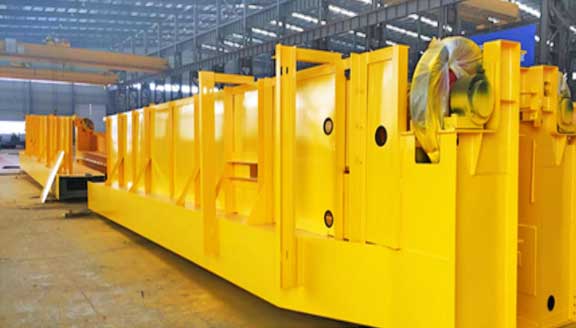
Comparing Bids Based on Price, Quality, Delivery Time, and Other Relevant Factors
Begin by analyzing each proposal to compare key factors such as:
- Price: Evaluate the total cost presented in each bid, considering both the initial purchase price and any additional fees or expenses.
- Quality: Assess the quality of the proposed crane based on specifications, materials used, and any certifications or industry standards met.
- Delivery time: Consider the proposed lead time for manufacturing and delivery, ensuring it aligns with your project timeline.
- Warranty and support: Review the warranty terms and after-sales support offered by each supplier to gauge their commitment to customer satisfaction.
- Additional features or value-added services: Look for any extra benefits or features included in the proposal that may provide added value to your purchase.
Create a structured evaluation matrix to objectively compare bids across these criteria and assign weights to prioritize factors based on their importance to your project.
Assessing Supplier Responsiveness and Willingness to Accommodate Your Needs
Beyond the numbers, it's essential to assess each supplier's responsiveness and willingness to accommodate your specific needs. Consider factors such as:
- Communication: Evaluate how promptly and effectively each supplier responded to your inquiries and requests for information.
- Flexibility: Assess the supplier's willingness to customize their proposal or make adjustments to meet your requirements.
- Problem-solving approach: Look for evidence of proactive problem-solving and a collaborative attitude towards addressing potential challenges.
Choose suppliers who demonstrate a commitment to understanding your needs and providing tailored solutions to support your project objectives.
Requesting Additional Information or Clarification as Needed
If any aspects of the proposals are unclear or require further clarification, don't hesitate to reach out to the suppliers for additional information. Requesting clarification demonstrates your thoroughness and commitment to making an informed decision.
Prepare a list of specific questions or points that require clarification and communicate them clearly to the suppliers. Be open to dialogue and provide feedback to ensure that suppliers have a clear understanding of your expectations.
By carefully evaluating supplier proposals and considering factors beyond just price, you can make a well-informed decision that aligns with your project goals and objectives. Remember to prioritize suppliers who not only offer competitive pricing but also demonstrate a commitment to quality, responsiveness, and customer satisfaction.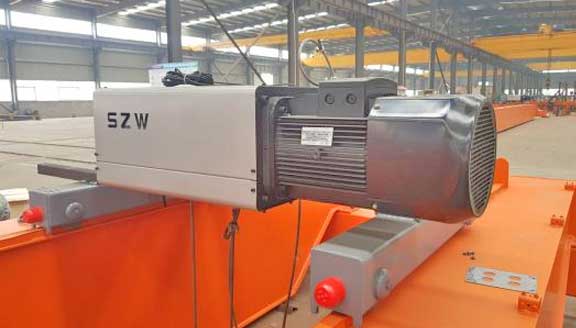
Negotiating Favorable Terms
Negotiation is a critical step in the procurement process, allowing you to secure favorable terms and maximize the value of your investment. Here's how to navigate negotiations with shortlisted suppliers to ensure the best outcomes for your project.
Engaging in Negotiations with Shortlisted Suppliers to Optimize Pricing and Terms
Once you've reviewed and assessed supplier proposals, it's time to enter into negotiations with the shortlisted candidates. Keep these tips in mind:
- Start with a collaborative approach: Approach negotiations as a partnership rather than a confrontation. Emphasize the mutual benefits of reaching a favorable agreement for both parties.
- Focus on value, not just price: While price is important, don't overlook other factors such as quality, delivery time, and after-sales support. Emphasize the value that the supplier can provide beyond just the initial cost.
- Be prepared to walk away: Set clear boundaries and alternatives in case negotiations reach an impasse. Being willing to walk away can give you leverage and ensure that you secure the best possible deal.
Exploring Opportunities for Volume Discounts, Long-Term Contracts, or Other Incentives
During negotiations, explore opportunities to leverage your purchasing power and secure additional benefits such as:
- Volume discounts: If you anticipate future orders or have a larger procurement volume, negotiate for discounted pricing based on economies of scale.
- Long-term contracts: Consider entering into long-term agreements with suppliers in exchange for preferential pricing, guaranteed supply, or other incentives.
- Value-added services: Explore opportunities for suppliers to provide additional services or support, such as training, maintenance, or upgrades, as part of the agreement.
Be creative in identifying potential areas for cost savings or value enhancement, and be prepared to negotiate terms that align with your project objectives and budget constraints.
Negotiating Payment Terms, Warranties, and After-Sales Support
Pay close attention to payment terms, warranties, and after-sales support during negotiations to ensure that you're protected and supported throughout the lifespan of the equipment. Consider the following:
- Payment terms: Negotiate favorable payment terms that align with your cash flow and budget requirements. This may include options for installment payments, milestone payments, or deferred payment schedules.
- Warranties: Clarify the terms and duration of warranties offered by the supplier, including coverage for parts, labor, and repairs. Seek assurances that any defects or issues will be promptly addressed at no additional cost.
- After-sales support: Discuss the level of after-sales support available from the supplier, including technical assistance, training, and maintenance services. Ensure that you have access to the support you need to maximize the performance and longevity of the equipment.
By negotiating favorable terms with your chosen supplier, you can optimize the value of your investment and set the stage for a successful partnership. Approach negotiations with a clear understanding of your objectives and priorities, and be prepared to advocate for your interests while maintaining a collaborative and constructive dialogue with the supplier.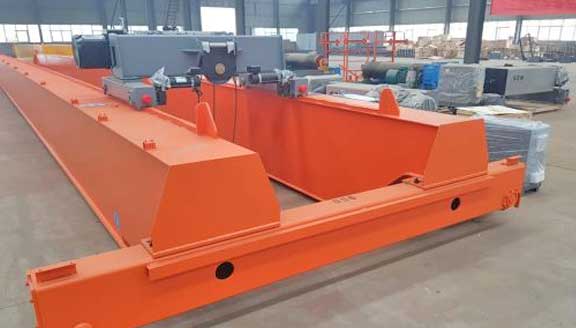
Assessing Supplier Reliability and Product Quality
Ensuring the reliability of your chosen supplier and the quality of their products is paramount to the success of your project. Here's how to thoroughly assess supplier reliability and product quality before making a commitment.
Conducting Due Diligence on Supplier Reliability, Including References and Reviews
Begin by gathering information on the supplier's reputation and track record. Consider the following steps:
- References: Request references from the supplier and reach out to past clients to inquire about their experiences. Ask specific questions about reliability, communication, and the overall satisfaction with the products and services provided.
- Online reviews: Search for reviews and testimonials from other customers to get a broader perspective on the supplier's performance. Look for patterns or recurring issues that may indicate potential red flags.
- Industry reputation: Research the supplier's standing within the industry and any accolades or recognition they have received. A reputable supplier is more likely to have a track record of delivering quality products and services consistently.
Inspecting Product Samples or Visiting Supplier Facilities, If Possible
Whenever possible, conduct physical inspections of product samples or visit the supplier's facilities to assess their capabilities and processes. Consider the following:
- Product samples: Request samples of the 5-ton overhead crane or similar products to evaluate their quality and workmanship firsthand. Look for any defects or inconsistencies that may raise concerns about the overall product quality.
- Supplier facilities: If feasible, arrange a visit to the supplier's manufacturing facilities to observe their operations and quality control processes. Pay attention to factors such as cleanliness, organization, and adherence to safety standards. Engage with staff members to gain insights into their expertise and commitment to quality.
Assessing Quality Control Processes and Certifications
Review the supplier's quality control processes and certifications to ensure that they meet your standards and regulatory requirements. Consider the following factors:
- Quality management system: Inquire about the supplier's quality management system and any certifications they hold, such as ISO 9001. These certifications demonstrate a commitment to maintaining consistent quality standards and continuous improvement.
- Compliance with industry standards: Verify that the supplier's products meet relevant industry standards and certifications, such as ASME or CE markings. This ensures that the products are designed and manufactured to comply with safety and performance requirements.
- Inspection and testing procedures: Understand the supplier's procedures for inspecting and testing products throughout the manufacturing process. Ensure that rigorous testing protocols are in place to identify and address any defects or deviations from specifications.
By thoroughly assessing supplier reliability and product quality through due diligence, inspections, and certifications, you can mitigate risks and make informed decisions that align with your project objectives. Don't hesitate to ask questions and seek clarification to ensure that you have confidence in your chosen supplier's ability to deliver quality products consistently.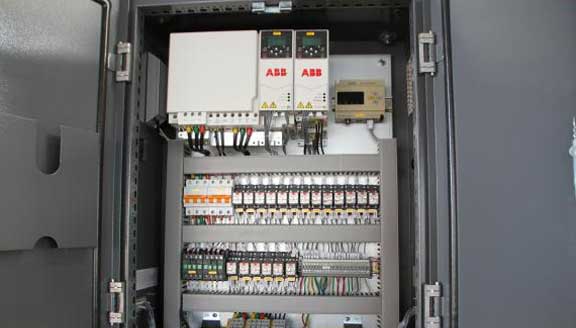
Leveraging Supplier Relationships
Establishing strong relationships with your selected suppliers goes beyond the transactional aspect of procurement. By fostering trust, open communication, and collaboration, you can create mutually beneficial partnerships that drive success for both parties involved. Here's how to leverage supplier relationships effectively:
Building Strong Relationships with Selected Suppliers Based on Trust and Mutual Benefit
Building trust is the foundation of any successful relationship. Here's how to cultivate strong ties with your suppliers:
- Transparency: Be open and honest in your communications, sharing information about your goals, challenges, and expectations. Transparency builds trust and fosters a collaborative environment.
- Reliability: Demonstrate reliability by honoring commitments, meeting deadlines, and paying invoices on time. Consistency in your actions builds confidence and strengthens the supplier's trust in your organization.
- Personal connection: Take the time to get to know your suppliers on a personal level. Invest in building rapport and understanding their business culture, values, and objectives. A strong personal connection lays the groundwork for a productive and enduring partnership.
Communicating Openly and Transparently to Address Any Issues or Concerns
Effective communication is essential for resolving issues and maintaining a healthy relationship. Here's how to foster open communication with your suppliers:
- Accessibility: Make yourself accessible and available to address any questions, concerns, or feedback from your suppliers. Provide multiple channels for communication, such as phone, email, and in-person meetings.
- Active listening: Listen attentively to your supplier's input and feedback, demonstrating empathy and understanding. Actively seek to understand their perspective and collaborate on finding solutions to shared challenges.
- Timely feedback: Provide timely and constructive feedback to your suppliers, acknowledging their contributions and addressing any areas for improvement. Encourage a culture of continuous improvement and mutual learning.
Exploring Opportunities for Collaboration and Continuous Improvement
Collaboration fosters innovation and drives continuous improvement. Here's how to leverage collaboration with your suppliers:
- Joint problem-solving: Collaborate with your suppliers to identify and address challenges collectively. Tap into their expertise and insights to develop innovative solutions that enhance product quality, efficiency, and cost-effectiveness.
- Supplier development programs: Establish supplier development programs to support your suppliers in enhancing their capabilities and performance. Provide training, resources, and guidance to help them meet your evolving needs and standards.
- Performance reviews: Conduct regular performance reviews with your suppliers to evaluate their performance against agreed-upon metrics and identify areas for improvement. Use these reviews as opportunities to recognize achievements and set targets for future growth.
By focusing on building strong relationships, fostering open communication, and exploring opportunities for collaboration and continuous improvement, you can unlock the full potential of your supplier partnerships and drive mutual success. Remember that successful relationships require ongoing investment and commitment from both parties involved.
Conclusion
As we wrap up our exploration of sourcing cost-effective suppliers for 5-ton overhead cranes, let's reflect on the key takeaways and best practices, emphasizing the importance of ongoing supplier management and relationship building.
Summarizing Key Takeaways and Best Practices
Throughout this guide, we've discussed several essential strategies for sourcing cost-effective suppliers:
- Begin by accurately estimating your requirements, including specific technical specifications and unique needs.
- Conduct thorough supplier research, utilizing online databases, directories, and industry networks to identify potential suppliers.
- Solicit competitive bids by developing comprehensive requests for proposal (RFP) or request for quotation (RFQ) and establishing clear instructions and deadlines.
- Evaluate supplier proposals based on criteria such as price, quality, and responsiveness, and negotiate favorable terms to optimize value.
- Assess supplier reliability and product quality through due diligence, inspections, and certifications.
- Finally, leverage supplier relationships by building trust, communicating openly, and exploring opportunities for collaboration and continuous improvement.
Emphasizing the Importance of Ongoing Supplier Management and Relationship Building
It's crucial to recognize that sourcing doesn't end once a supplier is selected and a contract is signed. Ongoing supplier management and relationship building are essential for long-term success. By nurturing strong relationships with your suppliers, you can:
- Foster a collaborative environment that promotes innovation and continuous improvement.
- Address issues and concerns proactively, ensuring that challenges are resolved swiftly and effectively.
- Adapt to changing market conditions and business needs, leveraging the expertise and resources of your suppliers to stay competitive.
- Cultivate a network of reliable partners who are invested in your success and committed to delivering value over the long term.
Remember that effective sourcing is an ongoing process that requires diligence, collaboration, and a commitment to continuous improvement. By investing time and effort in sourcing cost-effective suppliers, you can drive value for your organization and achieve your business objectives successfully.




